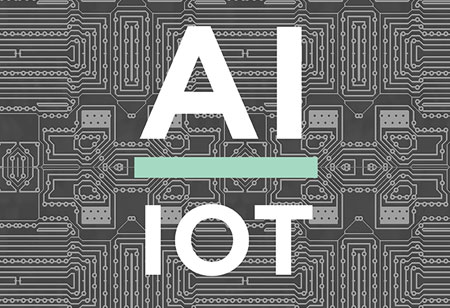THANK YOU FOR SUBSCRIBING
Enhancing Data Security via Blockchain and Cybersecurity
Over the past few years, blockchain technology has garnered significant attention.

By
Apac CIOOutlook | Tuesday, July 18, 2023
Stay ahead of the industry with exclusive feature stories on the top companies, expert insights and the latest news delivered straight to your inbox. Subscribe today.
Blockchain enhances data security with decentralisation, establishing trust and privacy in digital transactions, identity management, and data protection. It reshapes the digital landscape for a safer ecosystem.
FREMONT, CA: Over the past few years, blockchain technology has garnered significant attention, largely due to its connection with cryptocurrencies such as Bitcoin. However, its potential applications reach far beyond digital currency, presenting intriguing opportunities in cybersecurity, data privacy, and transparency. With the increasing frequency of data breaches and cyber threats, individuals and organisations are actively searching for innovative solutions to protect their digital assets. Blockchain technology provides a wide range of prospects to enhance security measures, ensure privacy, and promote transparency across various industries.
Decentralisation and Security
Blockchain technology is defined by its utilisation of a distributed ledger that stores data across multiple computers, eliminating the need for a central authority. This decentralised structure greatly enhances security measures, making it highly resistant to cyber-attacks. In contrast to centralised systems that can be exploited through a single vulnerable point, the distributed nature of blockchain makes it challenging for hackers to compromise the entire network. Consequently, the risks associated with data breaches and system failures are significantly diminished.
Immutable Data Records
The integrity of data in a blockchain is maintained through the implementation of cryptographic hashing, which prevents unauthorised manipulation. Each block within the chain possesses a distinct hash that corresponds to its contained data. As new blocks are appended, they include the hash of the preceding block, forming a connected chain. Any effort to modify the data would necessitate altering the hash of all subsequent blocks, rendering tampering exceptionally arduous. This mechanism ensures the immutability of the data stored within the blockchain.
Transparency and Trust
Blockchain technology's transparency and consensus mechanism promote trust and transparency among involved parties, as all transactions are visible to network participants. This reduces reliance on intermediaries and minimises the risk of fraud. The resulting trust has the potential to streamline processes and eliminate inefficiencies in sectors like finance and supply chain management. However, it is important to acknowledge the existing challenges in usability and accessibility that hinder the widespread adoption of blockchain-based services by the general public.
Many blockchain-based services currently lack appeal to the average consumer due to complexities and the need for technical literacy. These factors create barriers to adoption unless user-friendly features are implemented to enhance convenience and mitigate risks. Although blockchain networks promote transparency and trust, their user interfaces often lack the simplicity and intuitiveness found in traditional systems. Therefore, it is reasonable to conclude that established organisations with technical expertise and a pre-existing level of trust play a crucial role in harnessing the potential of blockchain technology and indirectly providing its benefits to their customers.
To achieve widespread adoption and unlock the full potential of blockchain technology, it is essential to prioritise the needs of end-users. This entails improving user experiences and addressing existing challenges concerning privacy, data control, and regulatory compliance. Developing solutions that offer users a seamless and secure experience while ensuring their control over personal data and compliance with relevant regulations is crucial. By addressing these aspects, blockchain-based services can better meet the needs of end-users and accelerate adoption rates.
To promote the adoption of blockchain technology and unleash its potential in enhancing cybersecurity and safeguarding data and transactions across industries, developers and stakeholders should allocate resources towards several key areas. These include the development of user-friendly interfaces, streamlining the onboarding process, and providing comprehensive educational materials. These measures will help users navigate blockchain systems safely and reliably.
Additionally, fostering collaboration among the blockchain community, regulators, and consumer advocacy groups is crucial. This collaboration allows for the effective prioritisation and addressing of consumer interests. By taking these steps, the adoption of blockchain technology can be facilitated while ensuring the protection and satisfaction of end-users.
Addressing the issues of usability and accessibility is essential to make blockchain technology more attractive to the general public. This will lead to wider adoption and unlock its potential benefits across various industries.
Secure Identity Management
The integration of blockchain technology with self-sovereign identity (SSI) systems has the potential to revolutionise digital identity management. SSI takes a user-centric approach, granting individuals ownership, control, and sharing capabilities over their personal information without relying on a central authority. When blockchain and SSI work together, it enables the establishment of strong, privacy-oriented, and legally binding digital contracts in the digital sphere. This convergence paves the way for secure and trustworthy digital identity management, opening up exciting possibilities.
Blockchain and Self-Sovereign Identity
Within a blockchain-driven SSI system, individuals can store their digital identity credentials, including documents like birth certificates, passports, and driver's licenses, on a decentralised and highly secure ledger. These credentials are digitally signed by the respective issuing authorities, such as government agencies or educational institutions. When verification is required by relying on parties like banks or employers, the credentials are authenticated without revealing the underlying data, thanks to cryptographic mechanisms.
To share identity information with a relying party, individuals use verifiable credentials within a blockchain-based SSI system. These credentials are digitally secure and resistant to tampering, acting as cryptographic attestations. They can be easily shared and verified when needed. Importantly, individuals retain control over their data and only disclose the necessary information to the relying party. This approach enhances privacy, minimises the risks associated with identity theft, and mitigates unauthorised access to personal information.
Enabling Legally Binding Digital Contracts
The fusion of blockchain technology and self-sovereign identity creates opportunities for the establishment of legally binding digital contracts. By incorporating self-executing agreements known as smart contracts, which have terms defined in code, with self-sovereign identity (SSI) systems, secure digital contracts can be created. When parties enter into a digital contract, they utilise their SSI credentials based on blockchain technology to verify their identities and digitally sign the contract using their private keys.
By utilising cryptographically secure digital signatures, the contract's integrity is ensured as it verifies that the intended parties have signed it, providing non-repudiation. Through the automated execution of predefined conditions in smart contracts, the risks of human error, fraud, and disputes are reduced. The combination of blockchain technology, self-sovereign identity (SSI), and smart contracts establishes a robust framework for secure, privacy-preserving, and legally binding digital contracts. This framework has the potential to revolutionise various industries, including finance, real estate, and legal services, by streamlining transactions, reducing costs, and fostering trust between parties.
The integration of blockchain technology, self-sovereign identity, and smart contracts has the potential to revolutionise digital identity management and establish legally binding digital contracts. By granting individuals ownership and control over their data, enhancing privacy measures, and enabling secure transactions, this integration can pave the way for significant progress in cybersecurity and data protection.
Smart Contracts and Secure Transactions
Smart contracts are designed to automatically execute transactions once certain predetermined conditions are fulfilled, removing the need for intermediaries. They enable automated insurance payouts, for example, by eliminating manual processing and intervention from intermediaries. For instance, in the event of a flight delay, a smart contract can be triggered to initiate a trustless and automated refund process without the passenger needing to make an explicit request. These contracts are typically written in programming languages like Solidity, commonly used for Ethereum, or other languages specific to blockchain platforms.
Each smart contract consists of a set of rules that define its behaviour based on specific conditions. These rules are expressed using if-then statements. For example, a smart contract for a rental agreement might include a rule stating that if the renter submits the deposit, the keys will be provided to them. Once the conditions specified in the contract are satisfied, the contract autonomously executes the corresponding actions, such as transferring funds or releasing digital assets.
Security Advantages
Web 2.0 infrastructure refers to the centralised architecture that underpins the current Internet. It relies on servers and is characterised by a system where a small group of intermediaries have control over data and services. In contrast, smart contracts provide several security advantages when compared to the traditional Web 2.0 infrastructure:
Decentralisation: Smart contracts are stored on decentralised blockchain networks. This decentralised architecture eliminates single points of failure, thereby enhancing resilience against cyber-attacks, data breaches, and system failures.
Immutability: Once a smart contract is deployed on the blockchain, it becomes immutable and resistant to alteration or tampering. This inherent characteristic guarantees the integrity and security of the contract's terms and conditions, ensuring their consistency throughout the entire lifespan of the contract.
Transparency: Smart contracts possess inherent transparency as their code and transaction history are openly visible on the blockchain. This transparency enables all parties involved to verify the integrity of the contract and significantly reduces the risk of fraud or manipulation.
Automation: Smart contracts automate the execution of transactions, effectively mitigating the risks associated with human error, fraud, and delays. By eliminating intermediaries and automating transactions, smart contracts streamline processes and enhance overall efficiency.
Trust: Smart contracts derive their trustworthiness from the enforcement provided by the consensus mechanism of the blockchain. Parties involved have confidence that the contract will execute precisely as intended, eliminating the need for a trusted third party. This inherent trust minimises disputes and enhances security throughout the transaction process.
By leveraging the capabilities of smart contracts, both businesses and individuals can benefit from a transaction process that is more secure, transparent, and efficient compared to traditional Web 2.0 infrastructure. As a result, smart contracts have the potential to revolutionise numerous industries by bolstering cybersecurity measures, fostering trust, and preserving privacy.
Blockchain technology holds immense potential for transforming cybersecurity, data privacy, and transparency across various industries. Its decentralised nature enhances security by reducing the risks of data breaches and system failures. The use of cryptographic hashing ensures the integrity and immutability of data stored in the blockchain. Transparency and trust are promoted through the visibility of transactions, reducing reliance on intermediaries and lowering the risk of fraudulent activities. However, achieving widespread adoption requires addressing usability and accessibility challenges to cater to the needs of end-users.
Furthermore, integrating blockchain with self-sovereign identity and smart contracts can revolutionise digital identity management and establish secure, privacy-preserving, and legally binding digital contracts. Smart contracts offer security advantages through decentralisation, immutability, transparency, automation, and trust.





